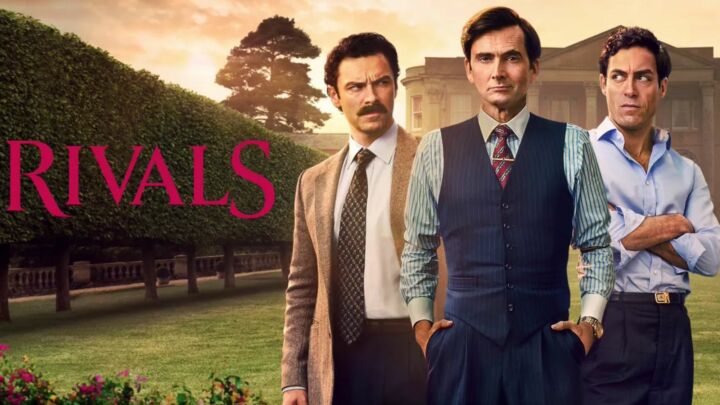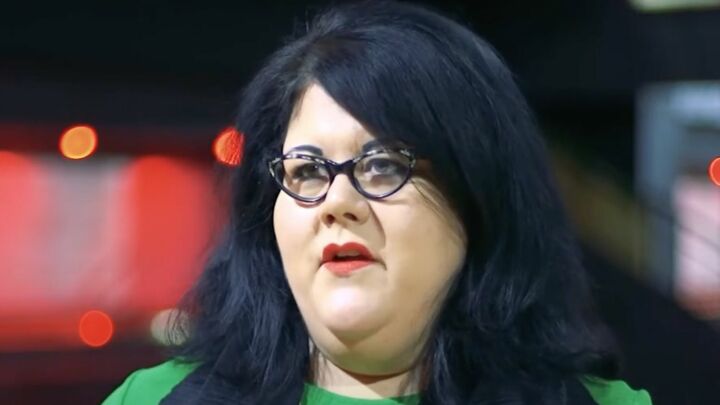The tie: a millstone around our necks?
British newsreaders are tying themselves in knots over whether to sport formal neckwear. Andrew Calcutt untangles a crisis of identities.

Want to read spiked ad-free? Become a spiked supporter.
Some of the biggest names in British media have been contorting themselves over whether or not to wear a tie. But the debate only reveals a loss of confidence in the organisations and traditions that ties once represented.
BBC Newsnight‘s Jeremy Paxman says he wants to cut loose from them. Over on Channel 4 News, Jon Snow agrees that ties should be consigned to the jumble sale of history. Instead Snow and Paxo have expressed interest in collarless Iranian shirts. (Church of England vicars wear almost the same garments under their dog collars. Perhaps all clerics avoid ties for fear that one day they will be strung up by them.)
As it goes, those who advocate cutting ties have not yet cut themselves off from wearing them: they’re just thinking about it. That hasn’t prevented others leaping to the defence of tradition. Peter York, Britain’s oracle of style, not only insists on wearing ties but also insists that they should always be worn by those reading the news on the radio. He must be softening: the classical, Reithian position is that dinner jackets are de rigeur.
Summer’s late but the silly season’s early, you must be thinking. If this sartorial paralysis persists (do I dare to dress high or low?), the Gentlemen of the Press will not even have the gumption to come out of the Gents. While inviting scorn, however, such mirror-gazing is also understandable, even predictable. Unravel it and the tie turns out to be an identity crisis in miniature; that is, a miniature version of the ‘who are we?’ question which haunts British society today. The outbreak of Logorrhoea over the 2012 Olympics was another recent instance of an object of little importance becoming a focus for such anxiety (see ‘It looks like Lisa Simpson giving head’, by Martyn Perks).
Suit and tie go together like horse and carriage. Now widely associated with old-fashioned privilege, the suit and tie was once a revolutionary garb worn by the dynamic bourgeoisie as they made the world in their own image (and in the process made the image of the besuited business man). In this get-up (and go: it was exported to the ends of the Earth along with capital), the suit was the equaliser. It represented, in its uniform, dark fabric, the end of aristocratic difference (to each nobleman, servants in his own colourful livery); instead of heraldic standards, standard dress; Victorian utility taking precedence over the conspicuous decoration of rococo and Regency.
While the business suit wove together the universalising tendencies of dynamic capitalism (in today’s China it still does), the tie served as a reminder of the limits to these social currents. In contrast to the common cloth of the suit, the tie was a badge of belonging to particular organisations and institutions. School, university, regiment, club or, equally informative, the absence thereof – by demonstrating connection/disconnection with these, the specific tie established the particular standing of those entitled to wear it, and in doing so displayed the limits to universal social mobility which capital had promised, then failed, to deliver.
The institutions which ties tied their wearers to were also the ones which bound British society together; or, more precisely, they bound together the upper middle classes and kept them apart from the oiks. But now these same institutions have fallen into disfavour. Who today could wear an old school tie and not expect to be mildly mocked for it? Hence the situation in which such ties can only be worn with an air of pre-emptive self-mockery. This does not preclude snobbery, however. This is snobbery with a twist: ostensibly thumbing one’s nose at one’s own privileged background, but all the same it takes one to know one.
With so many British institutions now as unwearable as they are also untenable, new times demand new ties: ethical tie (badge yourself by the campaign you support); this-is-me tie for self-expression (as worn by Jon Snow); and the joke tie, typically featuring rows of small, furry animals or similar, which is a way of representing by comic design your recognition that the tie as such is comical.
Unfortunately, none of these are suitable for senior TV news journalists: the ethical tie ropes the wearer in too closely to particular campaigns, giving the lie to journalistic impartiality (though Jon Snow has no problem with wristbands); tie-as-self-expression expresses a propensity for attention-seeking, which is not what journalists are supposed to be in it for; while the joke tie would turn even the real Trevor McDonald into Lenny Henry’s impression of him, Trevor McDoughnut. Gravitas it ain’t.
No wonder they are all tied up. Thankfully, professional pressures are like Alexander the Great and the Gordian knot: they cut straight through an impossibly twisted question of identity. When all dilemmas are said and done, we have to don the best garb for getting the job done.
Andrew Calcutt leads the master’s course in journalism and society at the University of East London. He is editor of Rising East and convenor of MagLab, the magazines network.
Previously on spiked
Andrew Calcutt explained why young people insist on displaying their underwear, while Munira Mirza argued that Britain’s identity crisis could not be explained by immigration. Jonny Thakkar showed that it’s not just Britain having problems: France is openly debating its future, too. Or read more at spiked issue Modern life.
Celebrate 25 years of spiked!
A media ecosystem dominated by a handful of billionaire owners, bad actors spreading disinformation online and the rich and powerful trying to stop us publishing stories. But we have you on our side. help to fund our journalism and those who choose All-access digital enjoy exclusive extras:
- Unlimited articles in our app and ad-free reading on all devices
- Exclusive newsletter and far fewer asks for support
- Full access to the Guardian Feast app
If you can, please support us on a monthly basis and make a big impact in support of open, independent journalism. Thank you.






Comments
Want to join the conversation?
Only spiked supporters and patrons, who donate regularly to us, can comment on our articles.